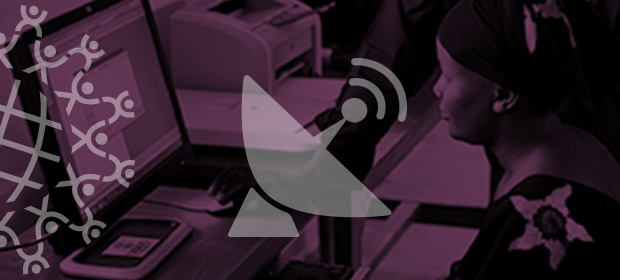Where We Work
See our interactive map


When data systems are weak, their flaws can become dangerous.
Data systems are crucial for health care all the time, but during a natural disaster, war, or pandemic like COVID-19, functioning data systems can mean the difference between life and death.
Data help us know what the health needs are, what capabilities each nearby hospital and clinic has, and where health workers should be deployed. Essential for responding to a pandemic, these data help monitor the spread and intensity of disease and help everyone, not just health workers, understand its severity and impact on society.
If the systems are operating smoothly, we don’t even realize they’re there. For example, the World Health Organization’s FluNet platform, an open source data tool that shares data on the influenza virus, helped prevent SARS from becoming endemic after the 2003 outbreak and allowed for an efficient, rapid, and comprehensive response to the 2009 H1N1 pandemic.
But when data systems are old or clunky or weak, their flaws become clear—and dangerous. Lack of information leads to government inaction, like in Puerto Rico during the aftermath of Hurricane Maria, when a lack of data on where people should go for medical care and what steps health facilities should take led to preventable deaths.One investment that really pays off (and becomes invisible during an emergency) is making sure a country’s data systems are interoperable. That is, making sure different digital health systems can talk to each other, using the same formats and terminology across all platforms. This helps the technology work seamlessly so health officials can focus on the emergency at hand rather than trying to wrangle data from a dozen different systems.
Most sub-Saharan countries have multiple sources of data and limited support to use the data in a unified way.
In the Democratic Republic of the Congo (DRC), for example—a country whose health system has faced Ebola outbreaks, war, and now COVID-19—a report published in the Journal of Health Informatics in Africa by Gérard Bisama, a health informatics technical advisor for IntraHealth, found that “data use has remained a persistent challenge in digital health implementations, especially in environments that have rapidly transitioned from data scarcity to data overload. All too often, digital data remain siloed in a variety of locations and formats or furnish duplicate information.”
The DRC has a shortage of health workers, with 0.28 physicians and 1.91 nurses and midwives per 10,000 people. This leaves significant gaps in the health system, which are exacerbated by a multitude of data systems that don’t speak to each other.
Take iHRIS, for example. The government of DRC used IntraHealth International’s free, open source software to conduct a payroll analysis. But they had to merge the iHRIS workforce data with the country’s payroll management system manually using Excel spreadsheets because each system had a different format and different terminologies.
When health systems suffer, everyone suffers.
The payroll analysis took a while but eventually identified ghost workers—that is, workers who were still on the payroll but no longer actually working those jobs. Now that those ghost workers are no longer being paid, the government has more funds to pay actual health workers.
But the DRC is not alone. Most sub-Saharan countries face the same challenges. “They have multiple sources of data and limited support over time to maintain their system and to use the data in a unified way,” Bisama says.
As the coronavirus continues to spread around the world, poor data systems that don’t speak to each other may mean lives lost. Important information isn’t readily available and health systems suffer. But when health systems suffer, everyone suffers.
“During the coronavirus, we can introduce true innovations in an emergency by leveraging existing systems and familiar technology that are already adopted at scale,” says Wayan Vota, IntraHealth’s digital health director. “Focusing on solutions with measured and appropriate digital health technology will allow us to be efficient and effective in our response to COVID-19.”Alongside our partner organization PATH, the Integrated HIV/AIDS Project in Haut Katanga and Lualaba project ensures that those affected by HIV in DRC are identified, referred, and receive high-quality care, treatment, and support services. IntraHealth also leads efforts to make stakeholder data systems interoperable for more efficient reporting of project-level data between various reporting systems, facilitating more accurate tracking of people living with HIV. The project is funded by USAID.
The Role of Interoperable Health Information Systems in Improving Health Outcomes: The Case of the Democratic Republic of Congo, is available to read here.
Get the latest updates from the blog and eNews




